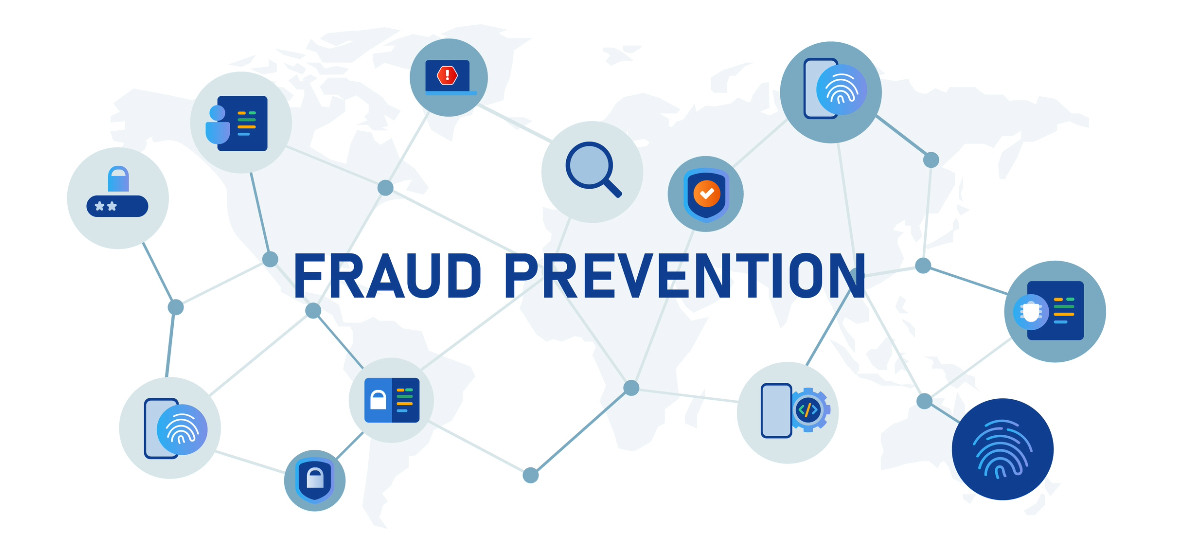Alert: Fraudulent Activity! How ACH Fraud Detection Can Help

As technology continues to revolutionize how businesses handle their finances, electronic transactions have become an integral part of the financial landscape. Hundreds of thousands of dollars can be transferred from one account to the next through the click of a button. And although the convenience and efficiency allowed by networks - such as the ACH - are unmatched, like any financial transaction, fraudsters are close at hand, ready to strike.
To give readers an idea of how prevalent this form of fraud is, a recent 2023 survey found that 56% of U.S. companies were victims of a fraud attempt in 2022.
But before we dive deeper into the risks associated with account-to-account electronic payment methods, readers must understand the network in question. In this case, we will address the ACH network as it makes up a majority of electronic transactions in the U.S.
What is the ACH Network?
ACH stands for "Automated Clearing House," a network built solely for processing electronic bill transfers in the United States. This covers various transactions, including direct deposit of paychecks, electronic bill payments, business-to-business payments, and more.
Managing this network is the National Automated Clearing House Association (NACHA), a non-profit organization. NACHA manages the rules, guidelines, and operational standards, ensuring the secure, efficient, and standardized movement of funds between bank accounts.
To give you an idea of how large this growing network truly is, in 2022 alone, over 30 billion transactions occurred, valued at almost $77 trillion - for this reason alone, it's pretty apparent why the ACH has become a prime target for fraud. So what is ACH Fraud exactly?
Understanding ACH Fraud
Although there are many methods of ACH fraud, it generally involves unauthorized transactions made through the ACH network. According to the Consumer Financial Protection Bureau, criminals exploit vulnerabilities in the system to gain access to bank accounts and siphon off funds. This type of fraud employs various tactics like the ones listed below:
- Phishing: Fraudsters send deceptive emails or messages posing as legitimate entities, such as banks or government agencies, requesting recipients to provide sensitive information like passwords or social security numbers. Once obtained, this information is used to initiate unauthorized ACH transactions.
- Account Takeovers: Cybercriminals exploit weak security practices to gain control of a victim's bank account. They may accomplish this by stealing login credentials or gaining access through malware. Once in control, fraudsters initiate ACH transfers without the account holder's knowledge.
- Counterfeit Checks: Criminals create counterfeit checks using stolen account information. These checks are deposited remotely, and ACH transfers are initiated before the bank detects the fraudulent activity.
The use of ACH scams to commit fraud is not the most common, but it is rising. According to a survey conducted by the Association for Finance Professionals in 2021, the percentage of respondents reporting fraudulent activity through ACH debits increased from 34% in 2020 to 37% in 2021.
What's more, the consequences of falling victim to these scams has dire repercussions for both individuals and businesses:
- Financial Loss: Unauthorized ACH transfers can lead to substantial financial losses, potentially draining bank accounts and causing severe financial distress.
- Reputation Damage: Businesses that experience ACH fraud can suffer reputational damage, eroding trust among customers and partners. Small- to medium-sized businesses, in particular, have suffered attacks by ACH fraudsters in the past.
- Legal Complications: Victims may find themselves entangled in legal battles to recover lost funds, which can be time-consuming and costly.
5 ACH Fraud Prevention Solutions
To safeguard against ACH fraud, individuals and businesses can adopt a multi-faceted approach that combines technology, awareness, and best practices:
- Educate Yourself: Stay informed about the latest ACH fraud tactics and phishing techniques. Regularly educate employees about the risks associated with sharing sensitive information.
- Strong Authentication: Employ solid and unique passwords for all financial accounts and enable multi-factor authentication whenever possible. This adds an extra layer of security, making it significantly harder for unauthorized individuals to access your accounts. You can use several free tools to ensure your password is truly strong.
- Secure Systems: Keep your devices and software updated with the latest security patches. Install reputable anti-malware software to protect against viruses and malware that can compromise your financial data.
- Verify Requests: Always verify the authenticity of requests for sensitive information or financial transactions. Contact the sender through official channels before responding to any requests.
- Positive Pay Services: For businesses, consider implementing positive pay services offered by banks. This service matches the details of checks presented for payment with a list of checks issued by the company, reducing the likelihood of fraudulent checks being processed.
All the above techniques are perfect strategies to keep companies safe from fraud and protect themselves and their customers. But these steps are only the first line of defense. One of the best and only methods to manage the risks in day-to-day ACH transactions is to purchase fraud prevention software.
ACH Fraud Prevention Software
ACH fraud prevention software was developed for one thing only: protecting businesses from becoming fraud victims. Through reporting and audit trails, transaction monitoring, and identity verification, companies can reduce their risk and save money in the process.
ACH transfers can take one to two hours or up to 3 days. Within these tight time frames, organizations must ensure they are dealing with the correct individual. And with most companies still using phone calls to verify changes to suppliers' bank accounts, it's not always a guarantee they will be able to confirm the person's identity. That's where MicroBilt steps in.
MicroBilt has been helping business owners, lenders, and consumers manage their financial risks and promote economic security for nearly 40 years. With our Bank and Risk Verification Database, you can stay informed about suspicious activities and quickly respond to incidents of ACH fraud. Our products and services are designed to provide you with the necessary tools to protect your customers and financial interests today.
